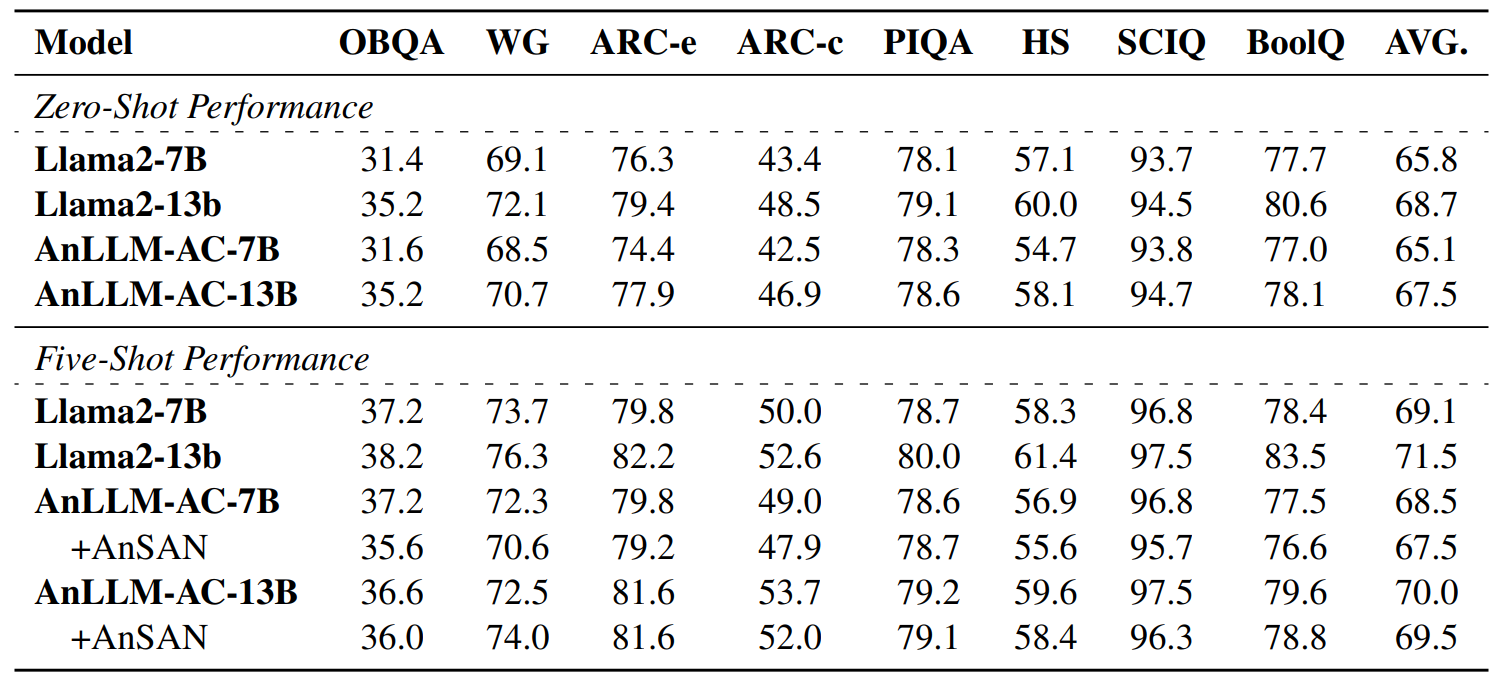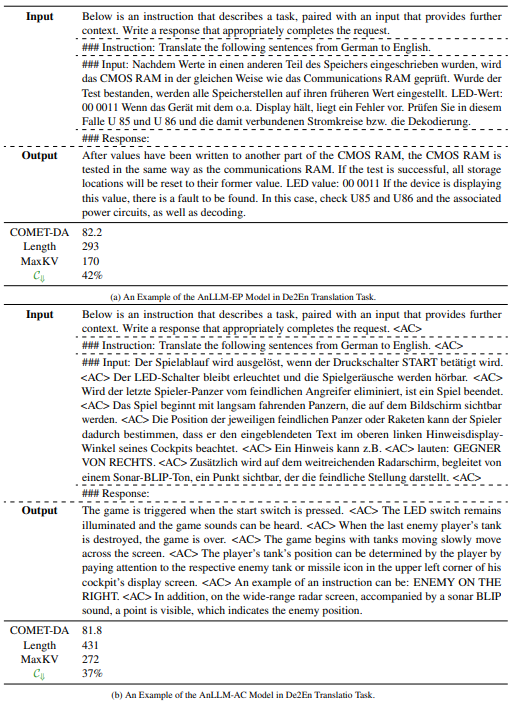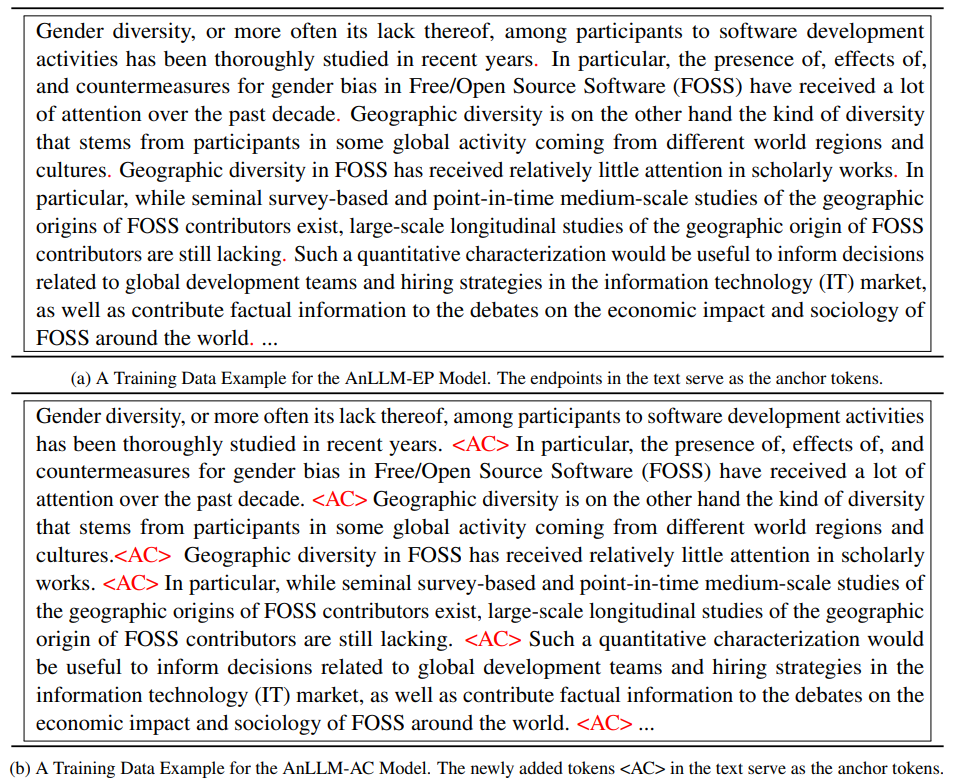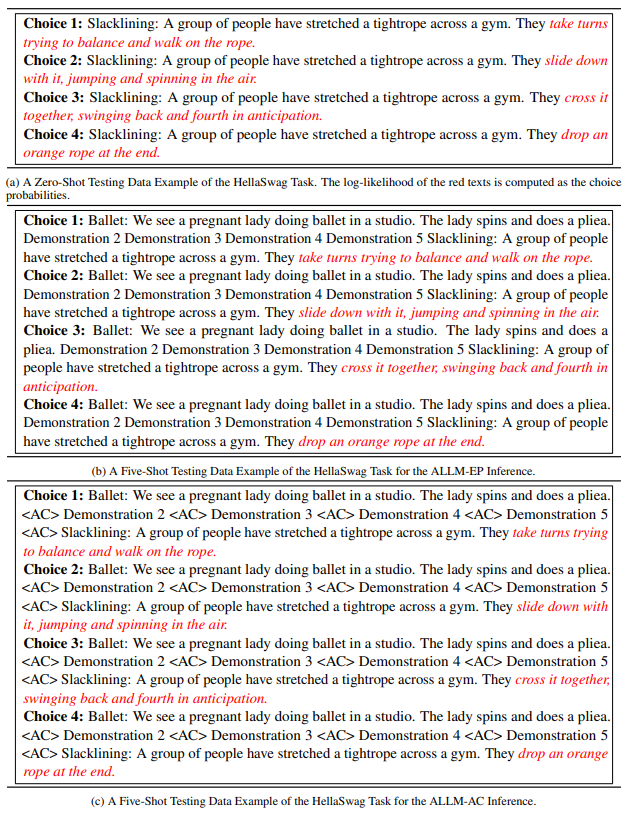and the distribution of digital products.
DM Television
Training and Testing Data Formats for AnLLM Models
:::info Authors:
(1) Jianhui Pang, from the University of Macau, and work was done when Jianhui Pang and Fanghua Ye were interning at Tencent AI Lab ([email protected]);
(2) Fanghua Ye, University College London, and work was done when Jianhui Pang and Fanghua Ye were interning at Tencent AI Lab ([email protected]);
(3) Derek F. Wong, University of Macau;
(4) Longyue Wang, Tencent AI Lab, and corresponding author.
:::
Table of Links3 Anchor-based Large Language Models
3.2 Anchor-based Self-Attention Networks
4 Experiments and 4.1 Our Implementation
4.2 Data and Training Procedure
7 Conclusion, Limitations, Ethics Statement, and References
B Data SettingsTo provide a thorough insight into how we continually pre-train the model into AnLLM and carry out evaluations, we showcase some data examples in this section for both training and testing data.
B.1 Training Data ExamplesIn this section, we provide examples to illustrate the specific data format used in training the AnLLM models. For the AnLLM-EP model, the endpoints act as anchor tokens, allowing us to directly utilize natural language texts. For the AnLLM-AC model, we append a new token at the end of each sequence in the input texts, which are initially split into sentences using the NLTK toolkits.[3] Some examples are presented in Table 6. All the trainig data are downloaded from HuggingFace [4], an opensource community.
B.2 Testing Data ExamplesFor the testing outlined in the results section (Section 5), we employ the same evaluation method as in previous work (Gao et al., 2023), which treats each choice as text generation and computes the corresponding probabilities, respectively. Table 7 presents some evaluation examples.
\

\

\

\

\

\
:::info This paper is available on arxiv under CC BY 4.0 DEED license.
:::
[3] https://www.nltk.org/api/nltk.tokenize.punkt. html
\ [4] https://huggingface.co/datasets/ togethercomputer/RedPajama-Data-1T-Sample
- Home
- About Us
- Write For Us / Submit Content
- Advertising And Affiliates
- Feeds And Syndication
- Contact Us
- Login
- Privacy
All Rights Reserved. Copyright , Central Coast Communications, Inc.